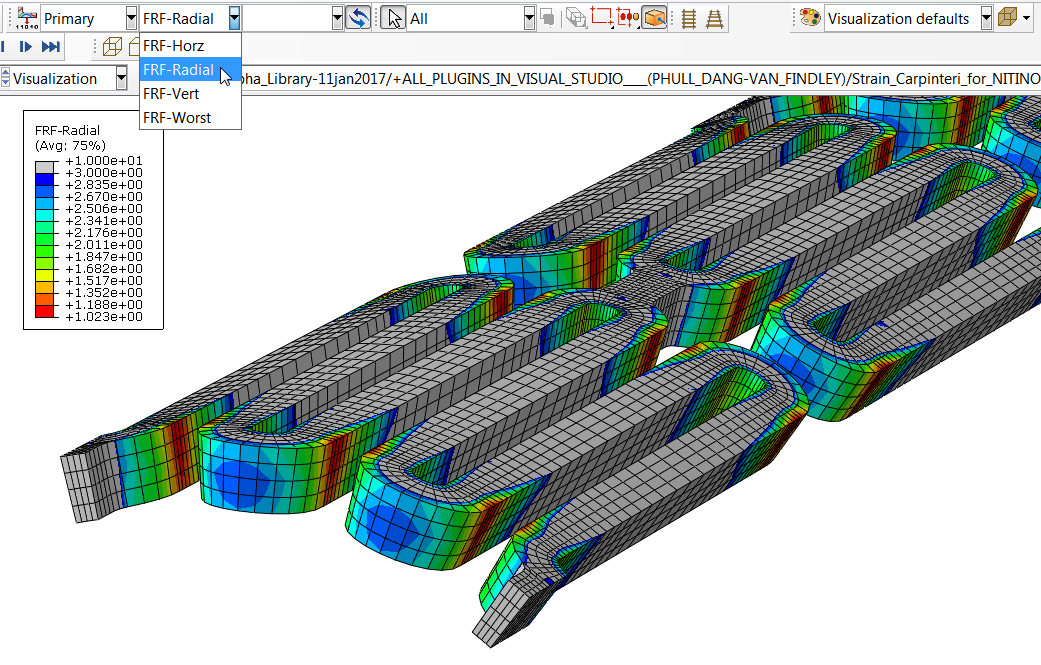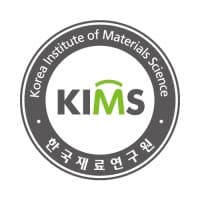Analyzing Nitinol Stents Using Abaqus
Self-expanding microdevices, known as stents, are small cylindrical metal mesh tubes typically made of materials like Nitinol. They are implanted into blood vessels to alleviate the effects of vascular diseases, such as the narrowing of blood vessels caused by plaque accumulation.
Nitinol stents can be produced by electrochemically machining patterns into thin tubes. Subsequently, the stent is mounted on a catheter and placed into a blood vessel. Once released by the delivery system, the stent self-expands, exerting radial force on the blood vessel wall.
The attractive properties of Nitinol, a nickel-titanium alloy, including superelasticity, shape memory, biocompatibility, and fatigue resistance, have led to its widespread use in medical devices like cardiovascular stents.
Analyzing Nitinol stents is a common practice to enhance stent design by uncovering detailed stress-strain distributions crucial for predicting device fatigue life. Careful stent modeling is essential to ensure accurate real-world solutions. Despite the challenges of working with Nitinol due to its complexity, finite element modeling allows designers to simulate the manufacturing and deployment processes of Nitinol devices, reducing testing time and expediting time-to-market. Furthermore, user subroutine libraries for constitutive models of superelastic alloys in Abaqus/Standard and Abaqus/Explicit simplify the modeling of Nitinol devices.
Nitinol Material Model
Most stents are modeled with either an elastic-plastic or Nitinol superelastic (-plastic) material model. For an elastic-plastic material, a proper amount of hardening should be defined to aid convergence. Note that perfect plasticity is assumed if the plastic strain exceeds the last yield point provided, which will sometimes lead to convergence difficulty. Similarly, for the Nitinol superelastic material model, a small positive slope should be provided for the transformation between the austenite and martensite phases, even though in reality the transformation zone slope is close to zero or sometimes negative.
Due to the difference between the loading and unloading curves, convergence difficulties can arise at the junction of the start or the end of the transformation zone if a large increment is used. Normally this is not a problem for stent analysis as the increment sizes are usually very small. However, for a simple coupon test, the maximum increment size might need to be reduced.
The superelasticity model has recently been added to Abaqus. Previously, this material model was available as umat and vumat subroutines as built-in materials for the elastic-plastic simulation of Nitinol. The superelasticity model provided in Abaqus is intended for modeling nitinol-type materials that undergo solid-solid, martensitic phase transformation and exhibit superelastic response. It can be used to model the stress-induced transformation of austenite to single variant martensite, the stress-induced transformation of martensite to austenite, reorientation of martensite, and the shape setting process. This model is based on the work of Auricchio and Taylor (1996, 1997) and is based on the concept of generalized plasticity and physical principles.
If you use physical test data for modeling in Abaqus, it is necessary to determine the coefficients of the Superel asticity material model using the calibration of these data. For this, you can read this Abaqus tutorial.
Blood Vessel Material Model
It is commonly represented as a hyperelastic matrix containing embedded fiber families. The Holzapfel-Gasser-Ogden model, which is implemented in Abaqus, is designed for this specific application and is utilized in this instance.
Stent Fatigue Analysis
The main concern with medical implants is their fatigue life. Traditional fatigue testing methods are often impractical due to their time-consuming nature, making them incompatible with conventional design cycles. Finite element analysis offers a way to obtain quantitative measures of stress and strain without physically constructing the devices, enabling design optimization and predicting device lifespan.
Materials or components being tested should withstand a specified level of cyclic loading without failure for at least 1 million cycles. For example, heart stents are expected to endure approximately 600 million cycles, equivalent to 15 years of alternating loading in vivo. As fatigue curves become relatively flat over such extended lifespans, minor variations in strain/stress amplitudes can significantly impact the calculated life.
Once in use, the stent undergoes cyclic loading due to pulsatile blood flow. With a normal heart rate of 60-80 beats per minute and a stent lifespan of 10 years, the stent must endure hundreds of millions of cycles. The assessment of fatigue behavior during this period is crucial, and simulations offer an alternative for studying this behavior.
For this purpose, you can use the Nitinol fatigue fe-safe plugin in Abaqus.


Image credit: Giovanni De Morais Teixeira
Flexibility Test
This test is used to assess the ability of a material or component to bend or flex without breaking. It is important for materials used in applications where flexibility is a critical factor, such as stents.
Crimp Simulation
This refers to simulating the process of crimping, which involves deforming a material or component to hold it in place or secure it to another object. Crimp simulation is important for evaluating the performance and durability of crimped connections, such as those found in medical devices, like stents.
Expansion Simulation
This involves simulating the expansion of a material or component under specific conditions, such as pressure, temperature, or mechanical loading. Expansion simulation is important for understanding how materials will behave in applications where expansion is a critical factor, such as in inflatable structures, seals, or medical implants.
Virtual Stenting
This refers to using computer-aided design and simulation tools to model the behavior of stents in a virtual environment. Virtual stenting allows for the evaluation of stent performance under various conditions, such as different vessel geometries, blood flow rates, and mechanical loads. It is an important tool for optimizing stent design and assessing its effectiveness in treating vascular diseases.
Abaqus Plugins/Utilities
It’s time to introduce Abaqus plugins that are used to analyze stents in Abaqus and make the way easier for Abaqus users. I will try to update these types of tools over time.
Well, the one that I introduced earlier was for fatigue analysis and called the fe-safe plug-in for Nitinol fatigue.
Wrap Mesh Plug-in
This plug-in is used to model tubes with lattice structures and to prepare it, you should read the DS Knowledge Base article “Abaqus/CAE plug-in to wrap a flat 3D mesh into a cylindrical shape“.
Calibrate Nitinol Material behavior
For this plugin, I previously wrote a step-by-step guide on how to use Nitinol test data calibration in Abaqus.
Subroutines
SMA UMAT
A user-defined material subroutine for polycrystalline shape memory alloys under large deformations. [Github]
USUPERELASHARDMOD / VUSUPERELASHARDMOD
To specify the variation of the transformation stress levels of a superelastic material as a function of the plastic strain dependence of the transformation stress levels on plastic strain in user subroutine USUPERELASHARDMOD (for Abaqus/Standard) or VUSUPERELASHARDMOD (for Abaqus/Explicit), for defining superelastic hardening modifications in Abaqus.
VUMAT/UMAT for Superelasticity and Plasticity of Shape Memory Alloys
For Releases 6.5-1 to 2019 of Abaqus, a constitutive model to simulate the superelastic behavior of alloys such as Nitinol (a nickel-titanium alloy commonly used in medical devices, such as cardiovascular stents and orthodontic wires) at finite strains is provided in the form of a built-in user material model for both Abaqus/Standard and Abaqus/Explicit. This model has been well-tested and performs robustly for all applicable elements.
This routine was compared with the Super elastic material model that was added from Abaqus 2019 and nothing is missing!














